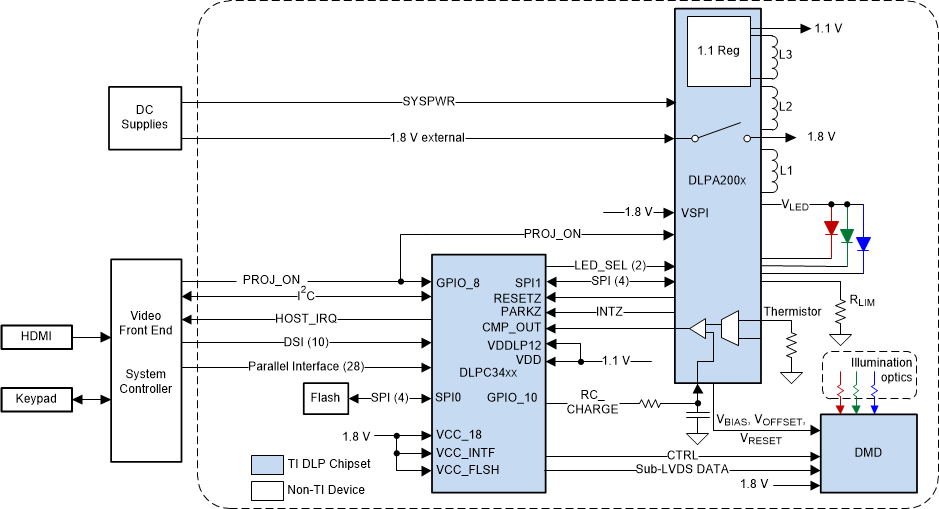JAJSGY9C february 2019 – july 2023 DLP2010
PRODUCTION DATA
- 1
- 1 特長
- 2 アプリケーション
- 3 概要
- 4 Revision History
- 5 Pin Configuration and Functions
-
6 Specifications
- 6.1 Absolute Maximum Ratings
- 6.2 Storage Conditions
- 6.3 ESD Ratings
- 6.4 Recommended Operating Conditions
- 6.5 Thermal Information
- 6.6 Electrical Characteristics
- 6.7 Timing Requirements
- 6.8 Switching Characteristics
- 6.9 System Mounting Interface Loads
- 6.10 Physical Characteristics of the Micromirror Array
- 6.11 Micromirror Array Optical Characteristics
- 6.12 Window Characteristics
- 6.13 Chipset Component Usage Specification
- 6.14 Software Requirements
- 7 Detailed Description
- 8 Application and Implementation
- 9 Power Supply Recommendations
- 10Layout
- 11Device and Documentation Support
- 12Mechanical, Packaging, and Orderable Information
8.2 Typical Application
This section describes a pico-projector using a DLP chipset that includes a DLP2010 DMD, DLPC3430 or DLPC3435 controller and DLPA200x/DLPA3000 PMIC/LED driver. The DLPC3430 or DLPC3435 controller does the digital image processing, the DLPA200x/DLPA3000 provides the needed analog functions for the projector, and DMD is the display device for producing the projected image.
The DLPC3430 controller in the pico-projector embedded module typically receives images/video from a host processor within the product. DLPC3430 controller then drives the DMD synchronized with the R, G, B LEDs in the optical engine to display the image/video as output of the optical engine.
 Figure 8-1 Typical
Application
Figure 8-1 Typical
Application